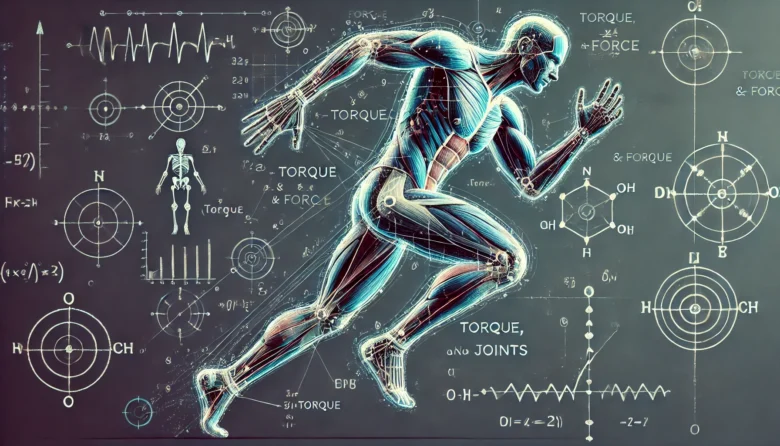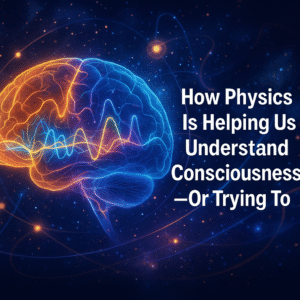Have you ever thought about how your body moves? Whether you’re lifting weights, running, or even typing on a keyboard, every action is powered by a complex system involving both biology and physics. This blog will explore The Physics of Muscular Contraction and Movement, explaining how forces, energy, and motion come together to make even the smallest gesture possible.
Introduction
When you think about physics, you might imagine rockets or electrical circuits. But did you know that the same principles of physics apply to something every day, such as bending your arm or walking? Muscular contraction and movement are perfect examples of how biological systems rely on physical principles to function. At its core, muscular movement is the result of forces generated within our bodies, coordinated by intricate physical mechanisms. Understanding these principles not only helps athletes optimize their performance but also explains how we manage to accomplish even the simplest tasks.
The Basics: How Muscles Work
Before we dive into the physics, let’s get a basic understanding of how muscles function. The muscles in your body contract and relax in response to signals from your brain, generating force and movement. Muscle fibres are made up of smaller units called sarcomeres, which contain proteins like actin and myosin. These proteins slide past each other during contraction, shortening the muscle and creating force. This process is often referred to as the sliding filament theory.
Now, let’s tie in the physics!

Force Generation in Muscles
In the world of physics, force is what causes an object to move, and this applies to your muscles as well. When your muscles contract, they generate force, which is then applied to your bones via tendons. The bones act as levers, moving parts of your body in a way that’s similar to how a machine functions.
Consider a simple bicep curl. When you lift a weight, the force generated by your biceps causes your forearm to rotate around your elbow joint, creating movement. This is a classic example of a lever system—a basic concept in physics. The elbow acts as the fulcrum (the pivot point), your forearm is the lever, and the weight you’re lifting is the resistance. By applying force, your bicep contracts and moves the lever (forearm) around the fulcrum (elbow), lifting the weight.
Example: Lever Systems in the Body
First-Class Lever: This is like a seesaw, where the fulcrum is between the effort and the resistance. An example in the body would be your neck muscles lifting your head.
Second-Class Lever: This is like a wheelbarrow, where the resistance is between the fulcrum and the effort. Your calf muscles lifting your heel when you stand on your toes is an example.
Third-Class Lever: This is the most common in the human body, where the effort is applied between the fulcrum and the resistance. The bicep curl is a perfect example of this.
Work, Energy, and Muscle Efficiency
In physics, work is defined as force applied over a distance. Every time your muscles contract to move a part of your body, they’re doing work. But muscles need energy to generate force. The energy comes from ATP (adenosine triphosphate), the molecular fuel for muscle contractions. When ATP is broken down, energy is released, allowing myosin heads to pull actin filaments, causing muscle contraction.
Muscles are surprisingly efficient at converting this chemical energy into mechanical energy (movement). However, they’re not 100% efficient. Some energy is always lost as heat, which is why your body warms up during exercise. Interestingly, the efficiency of muscle work is usually around 25%, meaning that only a quarter of the energy from ATP goes into actual movement, while the rest is dissipated as heat.
Case Study: Efficiency in Athletes
Studies on elite athletes have shown that small improvements in muscle efficiency can significantly enhance performance. By training specific muscle groups and optimizing movement techniques, athletes can reduce energy waste, allowing them to move faster or longer with the same energy input. For example, marathon runners focus on perfecting their gait to minimize energy loss, while weightlifters work on maximizing force output through proper form.
The Role of Torque and Angular Velocity
Muscle movement isn’t just about linear motion; many movements involve rotation, which introduces two more important physical concepts: torque and angular velocity.
Torque is the rotational equivalent of force. In muscle movement, torque is generated when muscles contract and apply force to bones, causing them to rotate around a joint. The greater the torque, the stronger the rotational force.
Angular velocity refers to how fast an object rotates. When you swing your arm or kick a ball, your muscles create angular velocity at your joints.
Let’s go back to our bicep curl example. As you curl the weight upwards, your bicep generates torque at the elbow joint, causing your forearm to rotate. The heavier the weight, the more torque you need to generate to move it. Likewise, if you want to lift the weight quickly, you need to increase your angular velocity, which means your muscles have to work harder.
Muscle Contraction Types: Concentric, Eccentric, and Isometric
In physics, motion can occur in different forms, and this also applies to muscle contraction. Muscles can contract in three main ways:
Concentric Contraction: This type of contraction is the most common, where the muscle shortens while producing force. For example, when you lift a dumbbell during a bicep curl, your biceps shorten to move the weight upwards.
Eccentric Contraction: Here, the muscle lengthens as it generates force. This occurs when you lower the dumbbell back down. Even though the muscle is lengthening, it is still actively controlling the movement.
Isometric Contraction: In this case, the muscle generates force without changing length. Think of holding a plank position. Your muscles are working hard, but there’s no movement occurring.
These different types of contractions highlight the versatility of muscles and how physics governs their function, whether you’re lifting, lowering, or holding something in place.

The Importance of Muscle Elasticity
Muscles are not just simple machines—they also have elastic properties, which means they can store and release energy, much like a spring. This property is especially important in movements like running and jumping. When you run, your leg muscles briefly stretch when your foot hits the ground, storing elastic energy. This energy is then released as your muscles contract, helping propel you forward.
This stretch-and-recoil mechanism reduces the amount of energy you need to expend, making running more efficient. In physics terms, this is similar to potential energy being stored in a stretched spring, which is then converted into kinetic energy when the spring recoils.
Conclusion: The Intersection of Physics and Biology
Understanding the physics of muscular contraction and movement gives us a deeper appreciation for how our bodies work. From simple activities like lifting a book to complex movements like sprinting, every action is powered by forces, energy, and mechanical principles. Whether you’re an athlete seeking to optimize performance or someone who enjoys learning about how the body functions, the intersection of physics and biology offers insights that are both fascinating and practical.
So, the next time you pick up something or go for a run, take a moment to marvel at the incredible physics happening inside your body—it’s truly a wonder of nature.
Author’s Note:
Exploring the physics behind muscle movement highlights how our everyday activities are shaped by the invisible forces of nature. It’s a powerful reminder of how science touches every aspect of our lives.
G.C., Ecosociosphere contributor.
References and Further Reading:
- Harvard University – Muscle Contraction and Movement
- National Institute of General Medical Sciences – How Muscles Work
- wellhealth how to build muscle tag: step by step guide – NYSTIN. https://nystin.com/wellhealth-how-to-build-muscle-tag-step-by-step-guide/
- Summary of Work, Energy, and Power: Crash Course Physics #9. https://learning.box/video-43-Work-Energy-and-Power-Crash-Course-Physics-9
- What is the formula of angular velocity?. https://en.ans.wiki/347/what-is-the-formula-of-angular-velocity/




